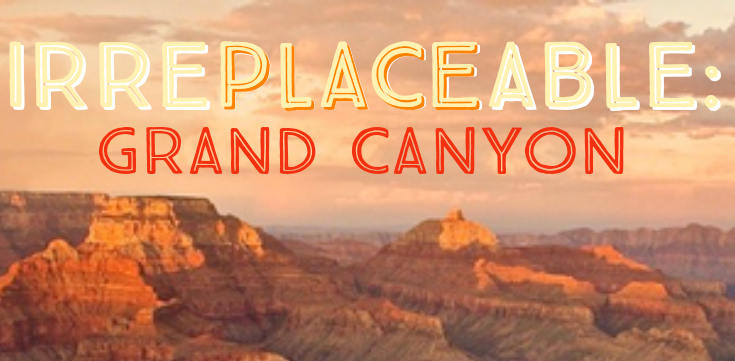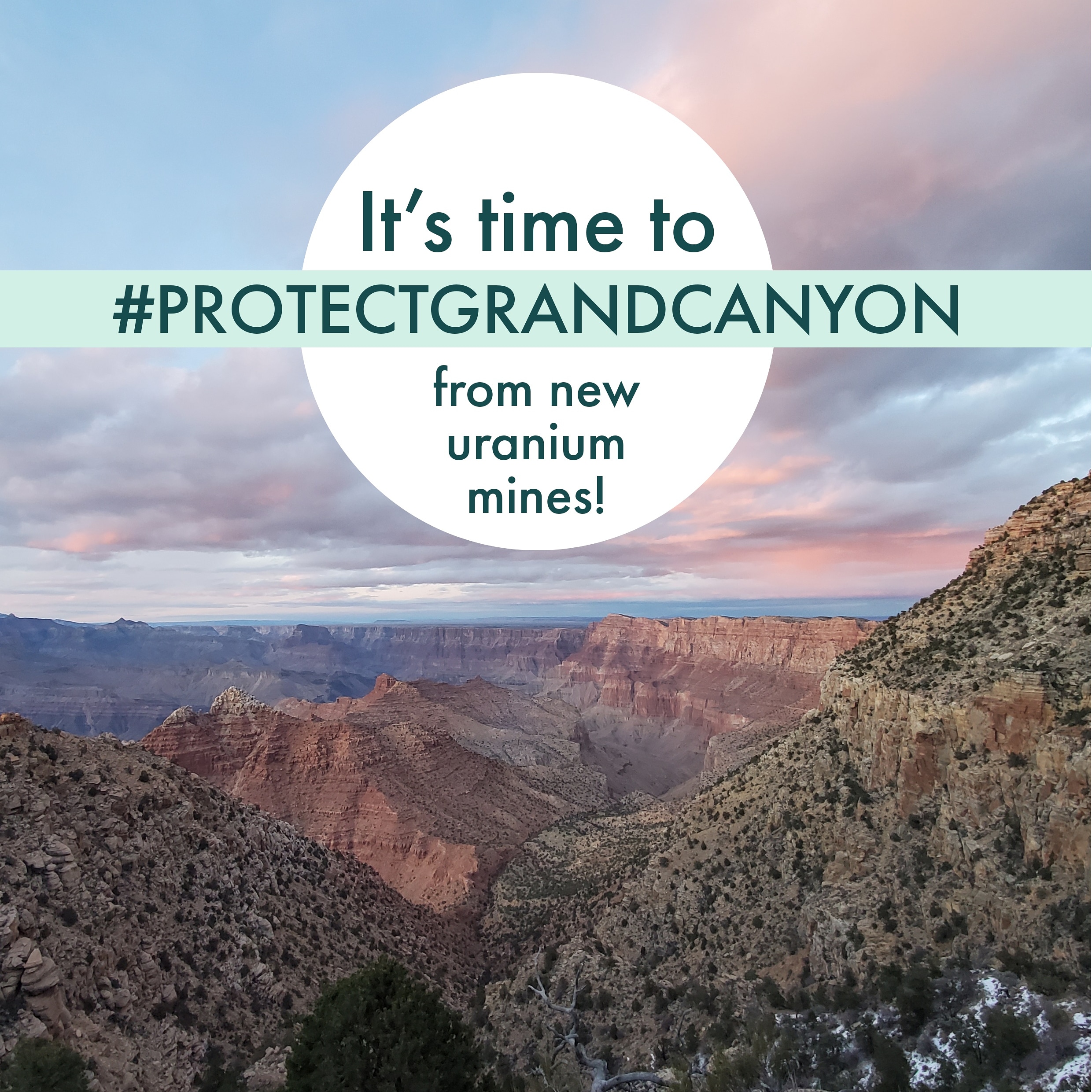
A Webinar and Podcast Series focusing on ongoing threats to the Grand Canyon region, emphasizing connections between people and place.
Irreplaceable: Grand Canyon is a series of webinars and podcasts that aim to spread awareness about threats to the Grand Canyon region. This is a series of conversations with people from affected communities about why these places are important, the values at risk, and the tools we have (and tools we need) to ensure that future generations have access to clean water, traditional use areas, sacred places, and livable spaces.
Webinar and Podcast Participants include:
- Diné (Navajo) Environmental Scientist Dr. Tommy Rock
- Havasupai Council Member Carletta Tilousi
- Havasupai Traditionalist Dianna Sue Uqualla
- Tusayan Mayor Clarinda Vail
- Diné (Navajo) Indigenous Community Organizer and Activist Leona Morgan
- Diné (Navajo) Grand Canyon Program Manager for Grand Canyon Trust, Sarana Riggs
- Tewa and Hopi Artist and Musician Ed Kabotie
- Diné (Navajo) Artist and Community Organizer Klee Benally
- Havasupai Tribal member Coleen Kaska
- Tusayan Sanitary District Chairman and former Tusayan Mayor Pete Shearer
- Former Executive Director of the Association on American Indian Affairs Jack Trope
Watch the Webinars:
Uranium Mining in the Grand Canyon Region
We discuss the ongoing threats from new and abandoned uranium mines, the effort to permanently protect the Grand Canyon region from new mines, problems at Pinyon Plain (formerly Canyon) uranium mine; safeguarding public health and protecting sacred places, and how our region takes the brunt of nuclear fuel chain contamination from mining to disposal.
Threats to the Little Colorado River
We talk about the vital importance of this river and its surroundings to the many cultures that have inhabited the Grand Canyon region since time immemorial; repeated threats from dewatering, development, and dams; and efforts to ensure Tribal sovereignty and improve the abilities of Tribes to protect their cultural landscapes.
Proposed Development at Tusayan, AZ
An Italian developer has been working for decades to build a massive development just outside Grand Canyon National Park’s southern boundary in a small town with a big water problem. We talk with town residents and a Havasupai Tribal member about the importance of protecting springs, cultural sites, and wildlife corridors; and how the Town can address its very real needs for growth without damaging Grand Canyon.
The San Francisco Peaks Traditional Cultural Property and Arizona Snowbowl
Clearly visible from most of the Grand Canyon region, the San Francisco Peaks are part of the cosmology of at least 13 Tribes and are known by many names including Nuva’tukya’ovi (Hopi), Dook’o’oosłííd (Dine/Navajo), Hvehasahpatch or Huassapatch (Havasu ‘Baaja/Havasupai), Sunha K’hbchu Yalanne (A:shiwi/Zuni), and more. Continuous expansions at the Arizona Snowbowl Ski Resort and artificial snowmaking with reclaimed water are extremely offensive, a threatened plant clings to its upper slopes, and oversight of the resort’s operations have been lax, leaving Tribal members harmed and frustrated. In the final webinar of this series, we help viewers to better understand the nature of the cultural violations at Snowbowl, and why Traditional Cultural Property status has failed to provide adequate protection. What can we do to truly protect sacred places?
Listen to the Podcast:
Over time, the podcast Grand Canyon TV will post interviews with select speakers from our series. Find Grand Canyon TV wherever you get your podcasts!
